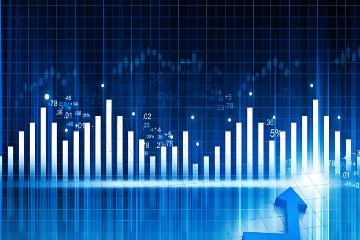Advertisements
The landscape of economic forecasting is always a dynamic dance of optimism and caution, embodying the hopes and fears that investors carry into the marketRecently, Goldman Sachs, a stalwart in the world of finance, has made several projections about the economy and stock market for the coming years, which paint a surprisingly bullish picture amidst a backdrop of investor anxiety and subdued sentimentThis perspective stands in stark contrast to the more pessimistic feelings circulating among traders and consumers, leading to intriguing discussions about the future of economic performance.
A recent survey conducted by the American Association of Individual Investors highlighted a growing sense of unease among market participantsMore than a third of traders expressed a bearish outlook for the next six months, revealing a widespread concern that the choppy waters of market volatility could lead to declines rather than growth
Advertisements
Meanwhile, consumer sentiment has taken a dip as illustrated by the World Federation of Large Enterprises' index, which showed economic expectations nearing recessionary levels come DecemberFor many, the current climate seems fraught with challenges, yet Goldman Sachs asserts that several bullish factors will propel the stock market upward in 2025, offering a glimmer of hope amidst the prevailing gloom.
Goldman Sachs economists crafted a five-point optimistic forecast for the upcoming year, suggesting that the American economy may expand even more robustly than commonly anticipatedAs per their estimates, Gross Domestic Product (GDP) might witness a year-over-year increase of 2.4% by the fourth quarter of 2025, outpacing the generally agreed-upon figure of 2%. This potential upturn in economic growth seems largely buoyed by vigorous consumer spending, which is expected to increase at an annual rate of 2.3%, largely supported by a robust job market and the wealth effects stemming from equity holdings
Advertisements
The optimistic view renders a stark contrast with the typically conservative measures adopted by economists when assessing consumer confidence.
Another area highlighted in Goldman Sachs's forecast is the anticipated surge in business investmentFinancial analysts predict a notable growth of approximately 5% in private investment by the fourth quarter of 2025, surpassing typical expectations hovering around 3%. Several factors contribute to this anticipated investment boom, including increased spending on new factories and artificial intelligence technology, as well as the restoration of tax incentives and improved business confidenceAs the economy continues to recover from previous downturns, the capacity for investment to 'take off' is promising news for the labor market and productivity levels across numerous sectors.
Additionally, the labor dynamics are set to shift favorably
Advertisements
Goldman predicts that the unemployment rate might decline to approximately 4% by the end of 2025, slightly better than the 4.2% reflected in the previous year's dataThis prediction is grounded in the high number of job vacancies which should, alongside rising consumer demand, continue to energize labor market growthNotably, the surge in migration labor—which was previously expected to complicate job absorption—has slacked significantly and is anticipated to ease further, thus enhancing the prospects for employment opportunities.
Furthermore, anticipations surrounding Federal Reserve actions signal a potentially more aggressive approach toward interest rate cuts than previously surmisedGoldman Sachs forecasts that the Fed may implement three rate cuts during 2025, lowering the federal funds rate in March, June, and SeptemberThe sentiment surrounding these cuts reflects a broader belief that inflationary pressures will continue to wane, thus giving the Federal Reserve ample operational flexibility
- Economic Conditions Drive Exchange Rates
- Secrets of Elite Traders' Success
- Drivers of Global Financial Turmoil
- A Review of Global Capital Markets in 2024
- Tesla Loses $280 Billion in Market Value Overnight
This is crucial as economic policy trajectories emerge from a complex interplay of fiscal measures and geopolitical factors that invariably affect market stability.
One particularly interesting facet of inflation stems from wage growth metrics, which have finally begun to show signs of cooling off—a valuable indicator for any impending shifts in purchasing power and pricesThe average wage growth dimmed to 3.9% in the past year, down significantly from the extraordinary 4.7% growth seen in April 2023. The waning pace of wage hikes is anticipated to play a pivotal role in mitigating inflationary spikes, much to the relief of both policymakers and consumers alikeSuch factors collectively cultivate an environment wherein prices begin to stabilize, thus fostering growing optimism regarding the broader economic outlook.
As we stand poised at the dawn of another year, Goldman Sachs retains its bullish position regarding the stock market, projecting a possible ascent for the S&P 500 Index to approximately 6,500 points by the end of 2025—translating to a 10% increase from current levels

This trajectory speaks volumes about the organization’s confidence in the underlying economic fundamentals, which, when nurtured properly, may lead to expansive growth opportunities.
In conclusion, the contrasting narratives surrounding optimism and caution within the economic landscape offer rich ground for debate and analysisWhile many individuals remain wary of the economic headwinds and uncertain market conditions, the insights provided by Goldman Sachs challenge prevailing sentimentsNotably, their predictions regarding GDP growth, business investments, employment dynamics, and moderating inflation rates are essential components that could redefine expectations for the U.Seconomy in the coming yearsOnly time will tell how these forecasts materialize, but the juxtaposition of cautious skepticism with a glimmer of optimistic potential is sure to engage economists, investors, and the public in the unfolding narrative of economic recovery and growth.
- January 21, 2025
Leave Your Comment